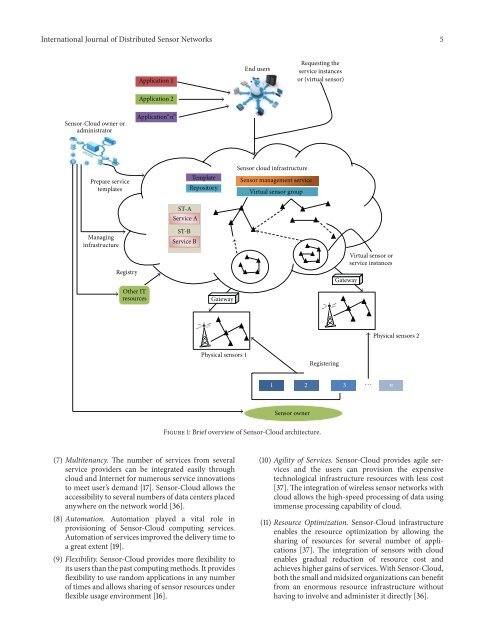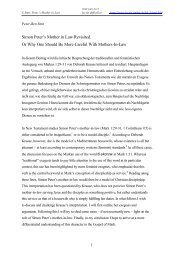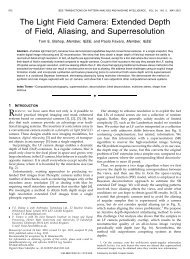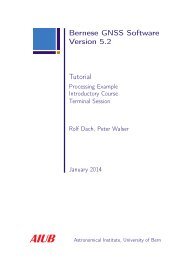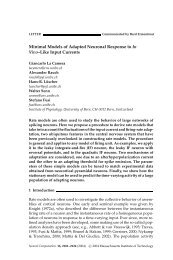Deploying Real-Life WSN Applications: Challenges ... - IAM - CDS
Deploying Real-Life WSN Applications: Challenges ... - IAM - CDS
Deploying Real-Life WSN Applications: Challenges ... - IAM - CDS
You also want an ePaper? Increase the reach of your titles
YUMPU automatically turns print PDFs into web optimized ePapers that Google loves.
International Journal of Distributed Sensor Networks 5<br />
Application 1<br />
End users<br />
Requesting the<br />
service instances<br />
or (virtual sensor)<br />
Application 2<br />
Sensor-Cloud owner or<br />
administrator<br />
Application“ n”<br />
Prepare service<br />
templates<br />
Template<br />
Repository<br />
ST-A<br />
Service A<br />
Sensor cloud infrastructure<br />
Sensor management service<br />
Virtual sensor group<br />
Managing<br />
infrastructure<br />
Registry<br />
Other IT<br />
resources<br />
ST-B<br />
Service B<br />
Gateway<br />
Gateway<br />
Virtual sensor or<br />
service instances<br />
Physical sensors 2<br />
Physical sensors 1<br />
Registering<br />
1 2 3<br />
··· n<br />
Sensor owner<br />
Figure 1: Brief overview of Sensor-Cloud architecture.<br />
(7) Multitenancy. The number of services from several<br />
service providers can be integrated easily through<br />
cloud and Internet for numerous service innovations<br />
to meet user’s demand [17]. Sensor-Cloud allows the<br />
accessibility to several numbers of data centers placed<br />
anywhere on the network world [36].<br />
(8) Automation. Automation played a vital role in<br />
provisioning of Sensor-Cloud computing services.<br />
Automation of services improved the delivery time to<br />
a great extent [19].<br />
(9) Flexibility. Sensor-Cloud provides more flexibility to<br />
its users than the past computing methods. It provides<br />
flexibility to use random applications in any number<br />
of times and allows sharing of sensor resources under<br />
flexible usage environment [16].<br />
(10) Agility of Services. Sensor-Cloud provides agile services<br />
and the users can provision the expensive<br />
technological infrastructure resources with less cost<br />
[37]. The integration of wireless sensor networks with<br />
cloud allows the high-speed processing of data using<br />
immense processing capability of cloud.<br />
(11) Resource Optimization. Sensor-Cloud infrastructure<br />
enables the resource optimization by allowing the<br />
sharing of resources for several number of applications<br />
[37]. The integration of sensors with cloud<br />
enables gradual reduction of resource cost and<br />
achieves higher gains of services. With Sensor-Cloud,<br />
both the small and midsized organizations can benefit<br />
from an enormous resource infrastructure without<br />
having to involve and administer it directly [36].


